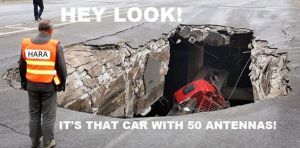Electronics History and News: “The Great Heathkit Mystery”
Adafruit has a featured article on their blog about the current state of Heathkit. When I was a lad I got to tour the Heathkit company in Benton Harbor, Michigan, a short trip from where I grew up. Up until the early ’90s, Heathkit helped many enter the world of electronics, computers, and ham radio by allowing them to build their own equipment and learn how it works step-by-step. In 1992 that all ended when Heathkit closed their doors to the hobbyist market and attempted to stay alive by serving the educational market. That ended in 2008.
Well, last year came an exciting announcement that Heathkit was going to rebuild. We all held our breath, but one year later we’re turning blue. Lady Ada and the intrepid sleuths at Adafruit set to find out exactly who these people were and what they were up to, and their article went viral.
1 year ago to the day today (12/20/2013) a member of the “board of directors” CEO/President of whoever may or may not own Heathkit did a Reddit AMA (ask me anything) – it’s unclear who they are, they would not say when asked and there is not any information on their FAQ page about the ownership. During the AMA, the person with the account “HeathCompany” answered in first person, described the “board” and the “CEO” but didn’t provide any details. The person did say “The CEO is avid musician and composer” and as far as the management team claiming to own Heathkit now, the person said they are: “Active in the industry 25+ years ago? Yes. Hams 25+ years ago? Yes.”
On the FAQ page, it has the following:
Q. So who are you guys?
A. More on this later…It’s been 1 year and there has not been an update on the Heathkit site or Facebookpage. They had some type of prize they promised during last year’s Reddit AMA, it’s unknown what happened with that, the winner was an account called “IFoundTheHeathKit” that only posted once. There is a twitter account called “Heathkit” but it’s owned by “Just some guy” in Seattle, WA.


